The care and upkeep of a lawn requires not only a significant amount of physical labor but also a significant amount of time and other resources. You must irrigate and trim the lawn consistently to keep its lush appearance and discourage weeds from infesting the grass. You may also need to fertilize and overseed the grass to guarantee it thrives.However, why go through this trouble when you can have a lovely garden instead? Read on and find out how to remove grass to start a garden.
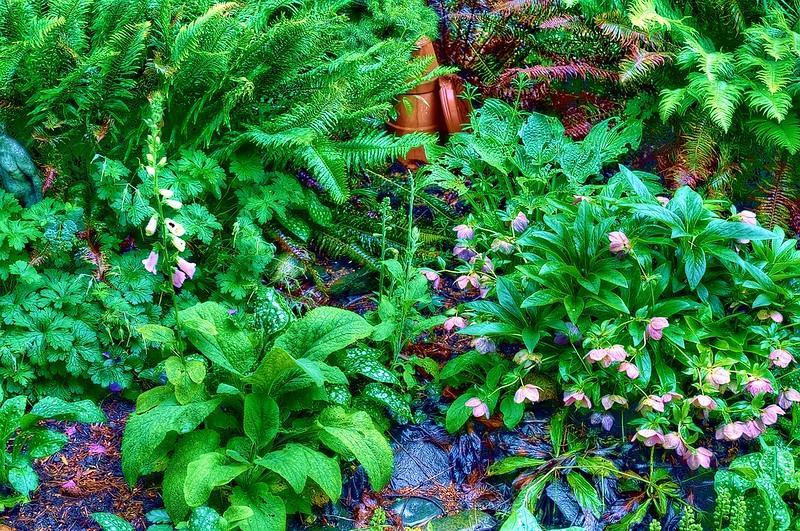
Whether you keep them at home or in the office, having plants around can bring a sense of satisfaction.
Incorporating planting spaces into the lawn creates a more aesthetically beautiful landscape. In addition, it allows homeowners to grow vegetables and fruits that are better for them or engage in a gratifying hobby like maintaining flower gardening.
The benefits of replacing lawn grass with planting spaces for mixed shrub/flower islands, flower garden beds, or vegetable gardens are coming to the attention of many homeowners. However, replacing lawn grass isn’t just for starting a garden.
You can also remove grass from your yard if bare spots or weeds cover more than half of your yard so you can start over. So, whether you are considering establishing a garden or revamping an existing lawn, you will need to remove the grass from the area first.
In this article, I will discuss several methods you can use to remove grass from a yard. I’ve tried these techniques many times, and they are all very effective.
Although every method has both positives and negatives, using any of them will bring you one step closer to achieving your goal of having a lush lawn or a garden bed.
Things To Do Before You Remove The Grass
Before you remove grass from your yard to replant grass or start a new garden, there are a few things that you need to take care of. These include:
Marking The Area
Before you begin, map out the area where you wish to remove the grass from the yard. If you intend to perform any digging, you should first check with your utility company to determine whether or not there are any underground cables or pipes.
You might be responsible for the damage if you strike any of these with a shovel. Or, even worse, you run the risk of getting hurt.
Choosing The Location For Your Garden Bed
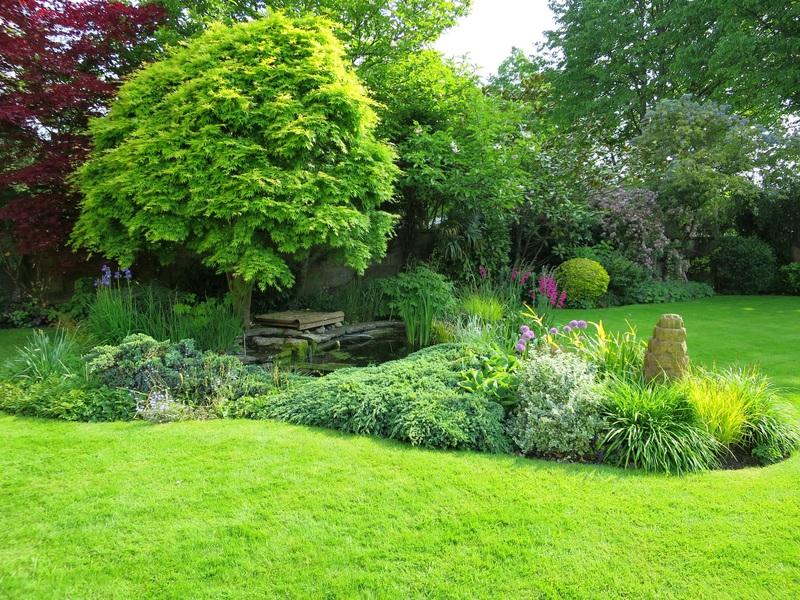
For most garden plants, locations with 8 to 12 hours of direct sunlight daily are best.
One of the biggest reasons people struggle to succeed with their newly installed gardens is that the garden location was chosen poorly. Therefore, it is essential to give some thought to the placement of your garden and the kinds of plants you want to grow.
So, it is worth spending some time explaining what features of a location make it suitable for a garden. Hopefully, this information will help you in the future.
Accessibility
If you position your garden close to your home, you will be able to appreciate the splendor of the surrounding area even if you don’t come out of the house. However, you should ensure that it is far enough so that your home will not obstruct the sunlight.
Terrain
Flat ground is ideal for growing flower beds and vegetables since it doesn’t slope in any direction. Also, planting should be avoided on rocky terrain unless you are growing plants with shallow root systems or plants that need less water and nutrients.
Soil
Your garden cannot exist without soil. Therefore, selecting the right soil is essential to establishing a good garden. Loam, made up of sand, clay, or silt, is considered the ideal form of soil for the cultivation of most garden plants.
Water Source
The area you choose for your garden should be close to a good water source. If you can, steer clear of regions that have sloped landscapes. Similarly, stay away from areas that tend to collect floodwater because they could saturate and suffocate your plants.
Sunlight
It would help if you aimed for a location that has between six and ten hours of unobstructed sunlight per day. Unlike certain grass species that can grow in the shadow, flowers and vegetables prefer sunny locations to flourish and thrive.
RELATED: How To Mow Tall Annoying Grass On Your Lawn? A Comprehensive Guide
How To Remove Grass For A New Garden?
After you have completed all of the tasks described above and decided where in your yard you want to create your outdoor garden, you can begin removing the grass from the yard.
So, let’s go ahead and explore the various approaches to removing grass from a lawn to establish a garden or start a new lawn from scratch.
Digging Up The Grass
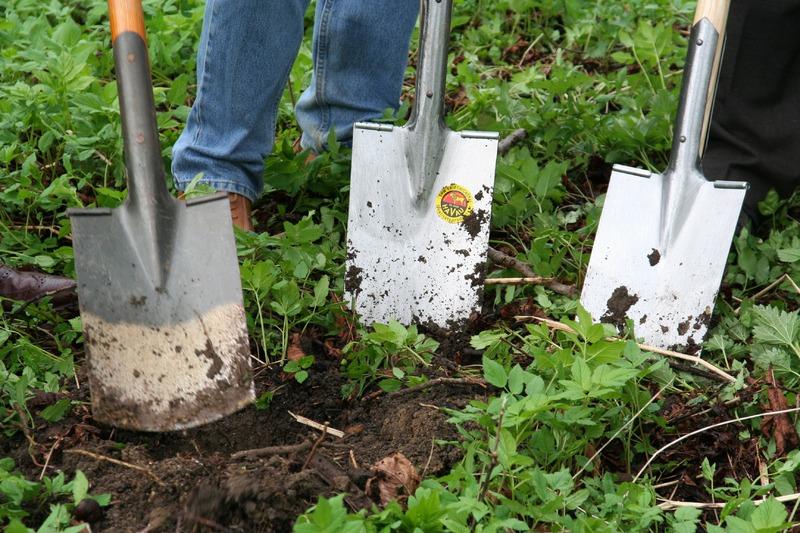
You can manually dig up your grass with a flat spade or mechanically with a motorized sod cutter.
First, let’s get the most unsavory method out of the way: manually removing the sod (and the back and the legs). This method yields results quickly, without any mess, and lets you start planting in your garden immediately. In addition, you won’t need to use harmful pesticides or chemical herbicides to remove the grass from your yard.
If the sod is in good shape, you could put it to use in another part of your yard. Also, it is a fantastic way to get some exercise done. However, removing sod with a spade or fork can result in a significant amount of sweat as well as painful muscles.
To start things, begin by giving the area a light soaking a couple of days in advance. This will help make the entire process less daunting and more manageable. Then, when you start digging, the soil should be damp but not soggy. The next step is to obtain a scraper, garden spade, or flat shovel. A shovel with a sharp flat edge is my tool of choice.
If digging with a spade is too hard for you, purchasing a tiller will make the job easier; however, you will need a model built for heavy-duty use with back tines. Next, cut around the perimeter of the sod pad using your shovel or spade.
Break under the sod with the shovel and snip it into 1-square-foot sections and or manageable pieces. If it is completely removed, the grass will not be able to grow through your new garden. Getting rid of deep taproots is essential since any residual grassroots within the soil will soon start growing and producing new grass plants.
If you intend to use the turf strips as compost later, roll them up, remove them, and transport them to a different location.
Consider renting a sod cutter if you are putting down a large garden bed. When it comes to larger projects, this spade-like equipment with steel blades is more effective than spades.
Remove any weeds still there, cut them with a hoe or ax, and then rake them up; alternatively, use a weed barrier that can be purchased easily.
After the sod has been removed, look for prospective pests in the soil, such as the larvae of May/June beetles, and eradicate them. Remove any pebbles, remnant clumps of grass, and large roots in the area.
Pros & Cons
| Pros | Cons |
Avoids the use of messy and loud power tools. Chemicals and pesticides are not utilized. It also eliminates most of the weeds. It calls for very little in the way of planning. It is a simple and straightforward procedure. The planting can begin right away. The procedure is relatively inexpensive. | It is not a good choice for expansive areas. It removes organic materials from the soil. It requires a lot of manual labor. There is a risk of exposing weeds buried deep. |
RELATED: Top Reasons Why Your Grass Seeds Are Not Growing (and What To Do About It)
Tilling The Grass
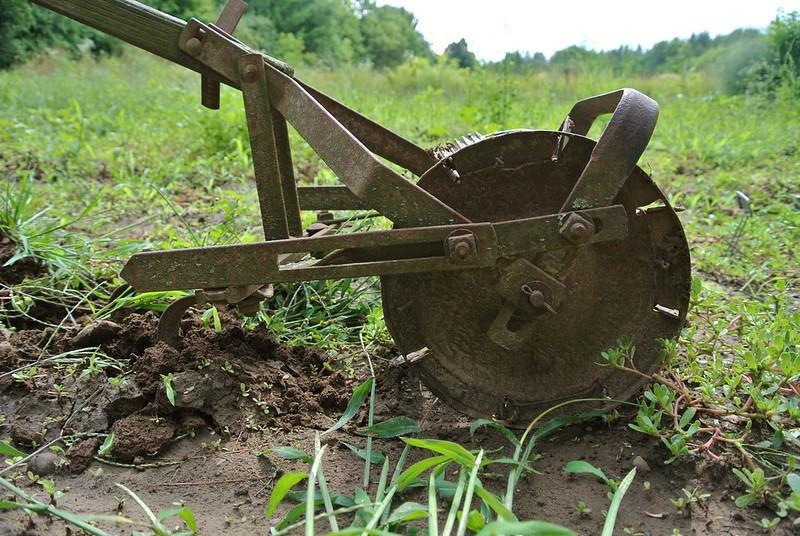
Tilling retains the garden’s organic matter, unlike digging the grass up.
Typically, the function of a tiller is to dig into the surface of the land in preparation for various gardening tasks. However, you can also put the tiller to good use in situations where you want to remove the grass from your yard.
Breaking sod with a tiller needs some muscle, but the machine does the bulk of the work. Tillers are available in both push and walk-behind variants. However, not every tiller machine will work perfectly when removing grass from different terrain.
It is necessary to select the appropriate size of the tiller in accordance with the dimensions of the land. In most cases, smaller tillers are able to handle gardens that have been previously worked, but in order to break up well-established sod, a larger device with rear tines is required, and it may take more than one pass.
Similarly, a rototiller has rotating blades that “churn” or mix the grass into the soil underneath. When you are tilling up new grass on a big area, you need to have a model that has rotating blades or rear tines, and it needs to be one that can handle a lot of weight. In addition, the soil should be damp to dry for an efficient operation.
If your soil is excessively wet, there is a good chance that the machine will become stuck. A tilled ground can be planted immediately, but the process sends weed seeds to the surface, where they can germinate and cause issues later. Tilling loosens the soil, making incorporating fertilizer and other soil amendments products into the planting zone simpler.
However, the structure of the soil can also be damaged by tilling. There are several micro bacteria and fungi in the soil that help your plants’ roots absorb nutrients and minerals.
The process of tilling muddles and shatters the microbes, making it more challenging to “restart” the growth of the microbes.
Pros & Cons
| Pros | Cons |
| Allows for planting to take place immediately. Convenient and less time-consuming than digging. Not too taxing in terms of physical effort. Retains the organic matter in the soil. | Certain weeds are uncovered and propagated. Tough in rocky terrain, as well as in wet or clay soils. The soil structure is harmed. You may need to purchase or rent a tiller. |
RELATED: Grasses That Can Be Planted And Grown In Fall & Winter | Our Top Picks
Smother Your Lawn
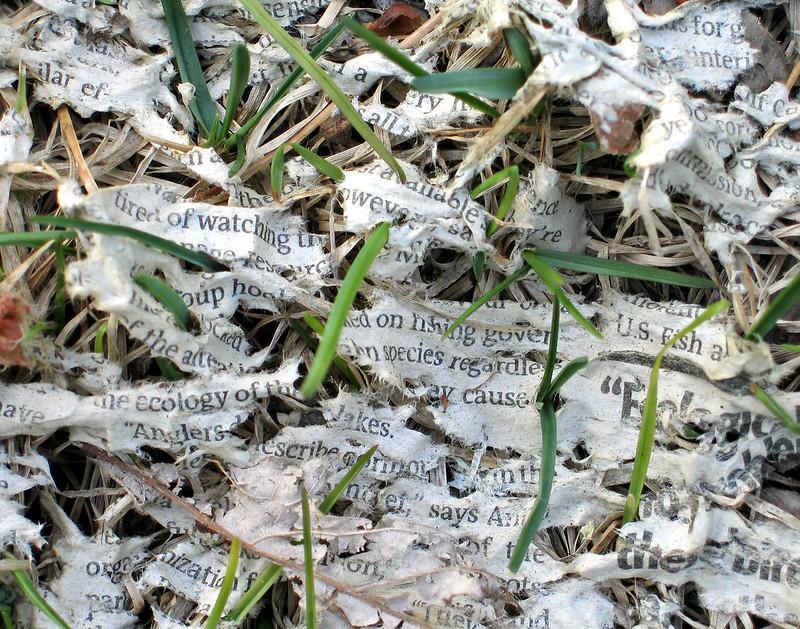
Smothering the grass may be the simplest and most effective method for removing it.
To survive, grass and other plants require sunlight and air. Therefore, if you think eradicating the grass will be too much labor for you, another option is to cover it, which will suffocate the grass and kill it in its place.
However, smothering the grass could take a few months depending on the season, the material, and how it is arranged on the lawn.
This technique, which is also known as no-dig gardening or lasagna gardening, entails covering your lawn to suffocate and eventually kill the grass.
It is possible to smother the grass with almost any material; pieces of cardboard, old newspapers, and chunks of carpeting are some of the most common options. After that, you have to cover it with layers of straw, mulch, and organic stuff, and you are good to go.
It is ideal to get this done toward the end of summer or early fall so the grass can die off during the winter. Then, you can improve the soil and plant the following spring.
To smother the grass on your lawn, you might begin by trimming the grass to a short length. This will make the area flatter, which will make it simpler to add the sheets or layers.
If you are going to use newspaper or cardboard to cover the area, you should make sure 10 to 12 layers are overlapping so that no sunlight can get through.
Next, water the layers just enough to keep them in place. After that, secure the cardboard to the grass using bricks, pebbles, or stakes to stop it from blowing away.
Then you simply need to wait one to three months. Meanwhile, you can keep checking the grass, but wait until all of the grass has died and is about half decomposed.
When you smother the grass on your lawn with cardboard or newspapers, you can immediately begin planting seeds once the grass is dead.
Pros & Cons
| Pros | Cons |
Cheap and simple. Does not require physical effort or intensive labor. Doesn’t interfere with soil structure. Doesn’t need the sod removed. Keeps the original organic materials in place. There is a minimal environmental impact. | A lot of material will be needed for larger lawns. It can also destroy beneficial soil organisms. It looks unattractive and undesirable on the lawn. Possibly ineffective on sloped terrain. This process requires a lot of time. |
Herbicides To Kill Grass
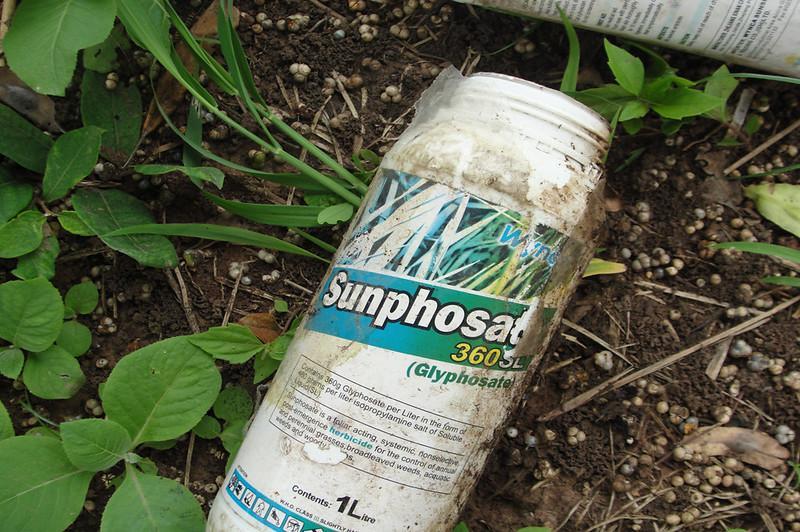
Some herbicides are selective, and kill certain plant types, while others are non-selective and kill everything.
I like the first three approaches more because, far too frequently in human interactions with nature, unintended consequences of chemical use have been discovered only later.
Nevertheless, I cannot argue against the fact that it is an efficient method of removing grass. Herbicides are good at killing grass quickly, although they are frequently avoided due to the adverse effects they might have on the environment.
You will require a broad-spectrum vegetation killer such as a glyphosate-based herbicide because the herbicides often used to control weeds are ineffective against plants with blade-like leaves such as grasses.
Read the instructions on the label, paying close attention to the specifics regarding how to apply the herbicide and dispose of any that might be left over safely.
Also, protect yourself and any other plants you want to keep before applying other herbicides on your lawn. Also, ensure the grass on your lawn is completely dry before using a herbicide spray on it. Finally, it is important to avoid applying herbicides when there is a chance of precipitation since this could cause the chemicals to be washed off the plants and into the ground as well as any surrounding waterways.
In my experience, herbicides work best when they are not exposed to the sun. In addition, before applying the product, you should properly water your grass to jumpstart the growth of any seeds or plants already there. Herbicides require several days to be absorbed effectively.
Also, remember that removing all the grass from your lawn may require more than one chemical application after the grass has died off.
There is no need to remove the dead grass; simply dig it together with any amendments and other soil products you want to add. The decomposing grass will naturally give nutrients to the soil as it goes through the process of decomposition.
Pros & Cons
| Pros | Cons |
| It requires less physical labor than other methods. The process is relatively quick and easy. | This can lead to contamination of the environment. Possibility of physical injury or harm to beneficial organisms. Risk of hurting or killing neighboring plants. They are expensive and require multiple applications. |
Solarize The Grass
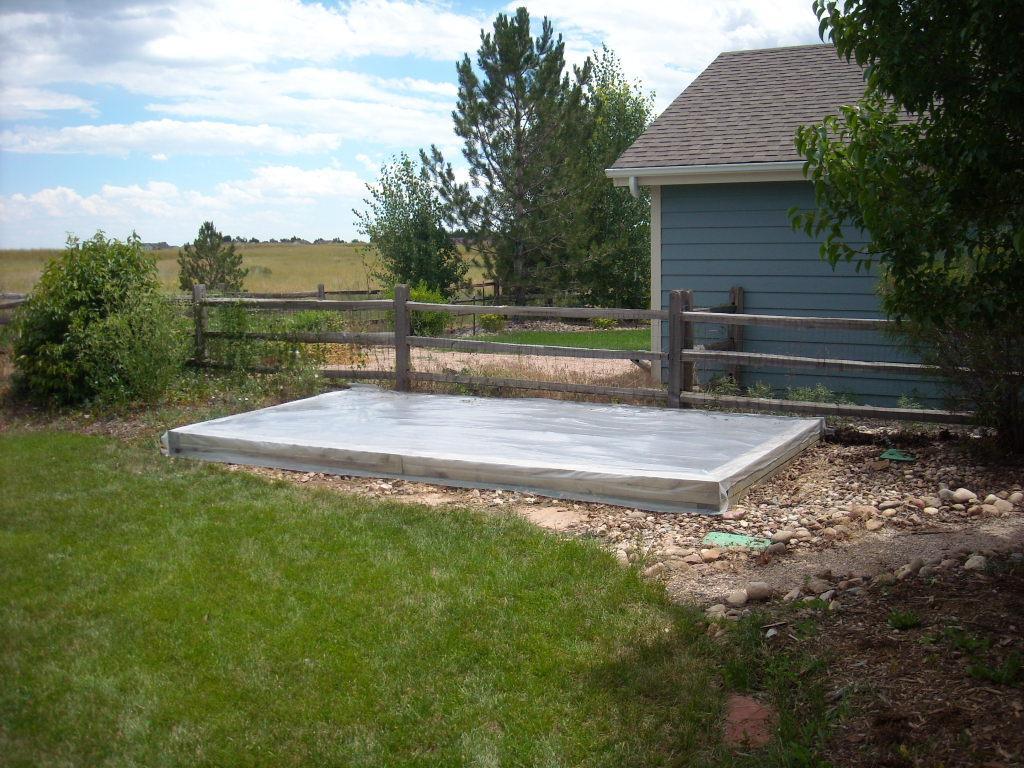
Soil solarization is an eco-friendly method of harnessing the sun’s power to kill grass on a lawn.
Solarizing is yet another method for getting rid of grass, even though it does not technically “remove” the grass. If you haven’t come across the term “solarizing” before, it refers to the practice of smothering and heating grass by covering it with a clear plastic sheet.
High heat also destroys bacteria, bugs, and weeds in the grass and underneath the soil. The process of solarizing the ground is most effective on heavy soils, such as those that are composed of clay, loam, or a combination of the two.
You should solarize your lawn during the summer, as this is the time when the target area has the maximum exposure to direct sunlight. To get started, clear the area of any plants and other debris. Next, trim the grass short, and then water the surrounding area.
The efficiency of solarization is improved when conditions are foggy and wet. When the grass is ready for solarization, you can cover it with a tarp, a sheet of glass, or plastic. In most situations, a thicker variety of plastic will function better than a thinner one, which will quickly break down and shred.
Extend the plastic sheeting by a distance of between six and eight inches beyond the boundaries of the grass. Extending the plastic promotes equal heating throughout because the borders don’t heat as well as the middle.
Also, applying a second layer of plastic on top of the first will allow you to maximize the efficiency of the process. To keep the plastic covering in place, use rocks or garden stakes. All of the edges and seams of the plastic must be tucked in or held firmly down.
This is done to restrict fresh air entrance, space beneath the plastic, and new growth. You can also bury the edges in the ground to ensure no air can come through and help retain the heat.
Keep the area covered for a period of four to eight weeks, or until all of the grass, including the roots, has died entirely. After the grass has died, the plastic can be removed, the soil can be amended, and gardening can begin.
Getting rid of the dead grass is unnecessary because it will eventually break down and contribute nutrients to the soil in the garden.
Pros & Cons
| Pros | Cons |
Does not affect the environment. It also kills weeds and bugs. It is perfect for big areas. There’s not much physical work involved. | Slower than other methods. It makes the lawn look unattractive. |
Final Thoughts
When you want to build a garden or flower bed on your property, there are numerous efficient ways to get the grass out of the way first. However, each of them has its unique benefits and drawbacks.
Just bear in mind that no matter which method you use, preparing your gardening area for planting takes time. However, once the grass has died, you will be able to plant whatever flowers and vegetables you like.
Frequently Asked Questions (FAQs)
What is the easiest way to remove grass?
The easiest way to get rid of grass is to smother it with plastic, newspaper, or cardboard. In contrast, the quickest approach to manually removing a lawn is using a sod cutter. If neither is possible, you can manually dig up your yard using a flat shovel.
Will grass grow back after vinegar?
The acetic acid content in white vinegar is not high enough to kill grass permanently. Therefore, to remove the grass from your yard, you might need to apply it multiple times. A single application, however, might be sufficient if the grass is young and has shallow roots.
What month should you start a garden?
Late March or early April is often a great time to start a garden in many parts of the country. This is also the ideal period for “tilling the ground” and adding organic matter to the soil in order to improve the structure of the soil and the nutrient levels.
How do you get rid of old grass?
Old grass should be easy to remove, but doing so will result in the loss of organic matter. However, you can easily remove old grass from your lawn with a bit of strength, elbow grease, and a good garden spade. You can also use a sod cutter if this appears to be too much effort.
What kills grass and weeds permanently?
If you want to get rid of weeds and grass for good, one of your best options is to use a non-selective herbicide like Roundup. Glyphosate in Roundup works by penetrating the plant through the leaves. From then on, it targets all plant systems, including the roots, and eventually kills the grass.
Sources for Further Reading
Grass Removal Methods – UC Master Gardener Program – University of California
Lawn (Turfgrass) Removal Methods – University of Maryland Extension Service
Remove grass and ground covers – University of Florida Institute of Food and Agricultural
Removing Your Lawn – California Department of Water Resources, State of California
Editor’s Recommendations
How To Mow Tall Annoying Grass On Your Lawn? A Comprehensive Guide
St. Augustine Grass Vs. Bermuda Grass: What’s The Difference And Which Is Better?







